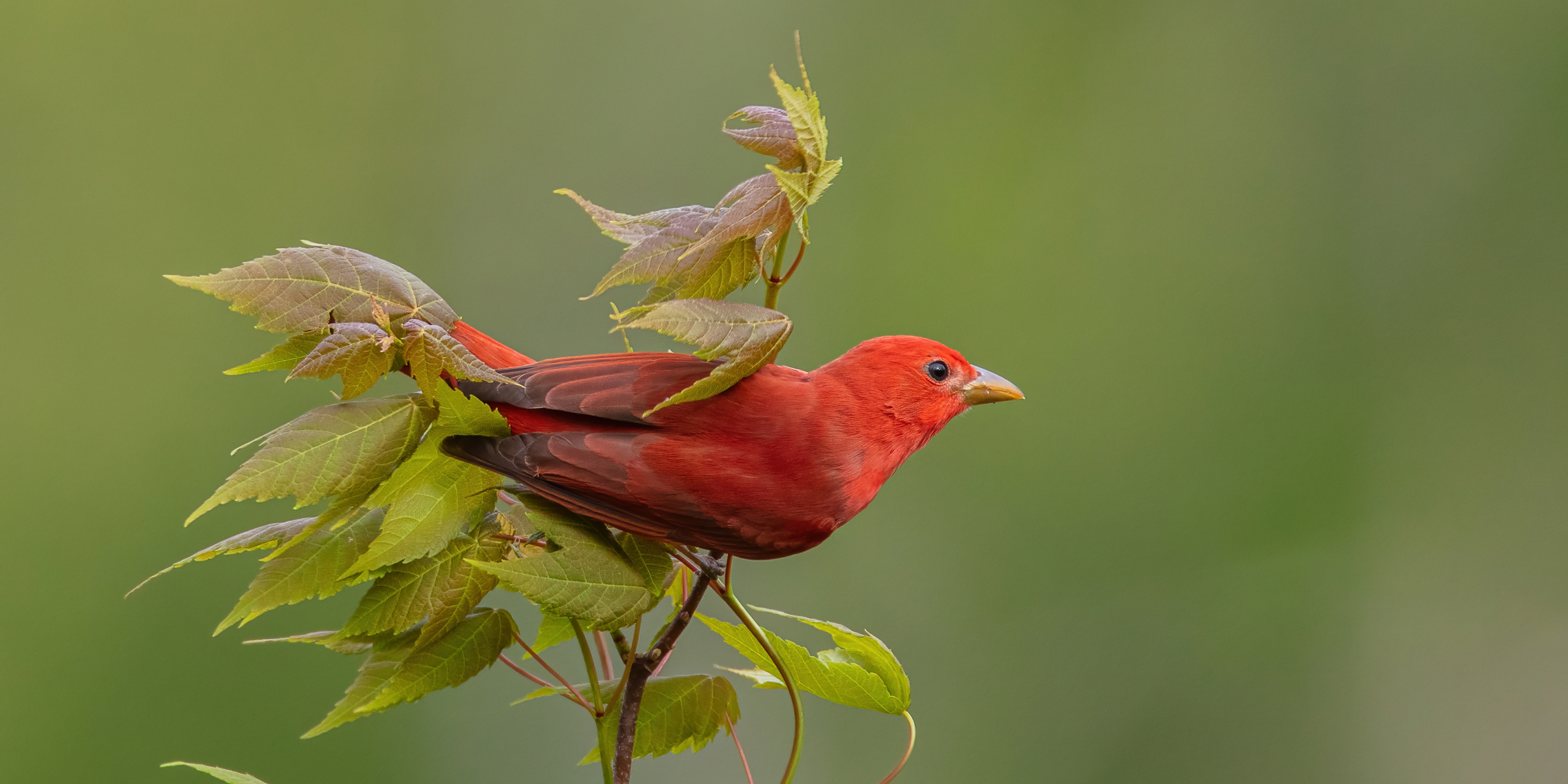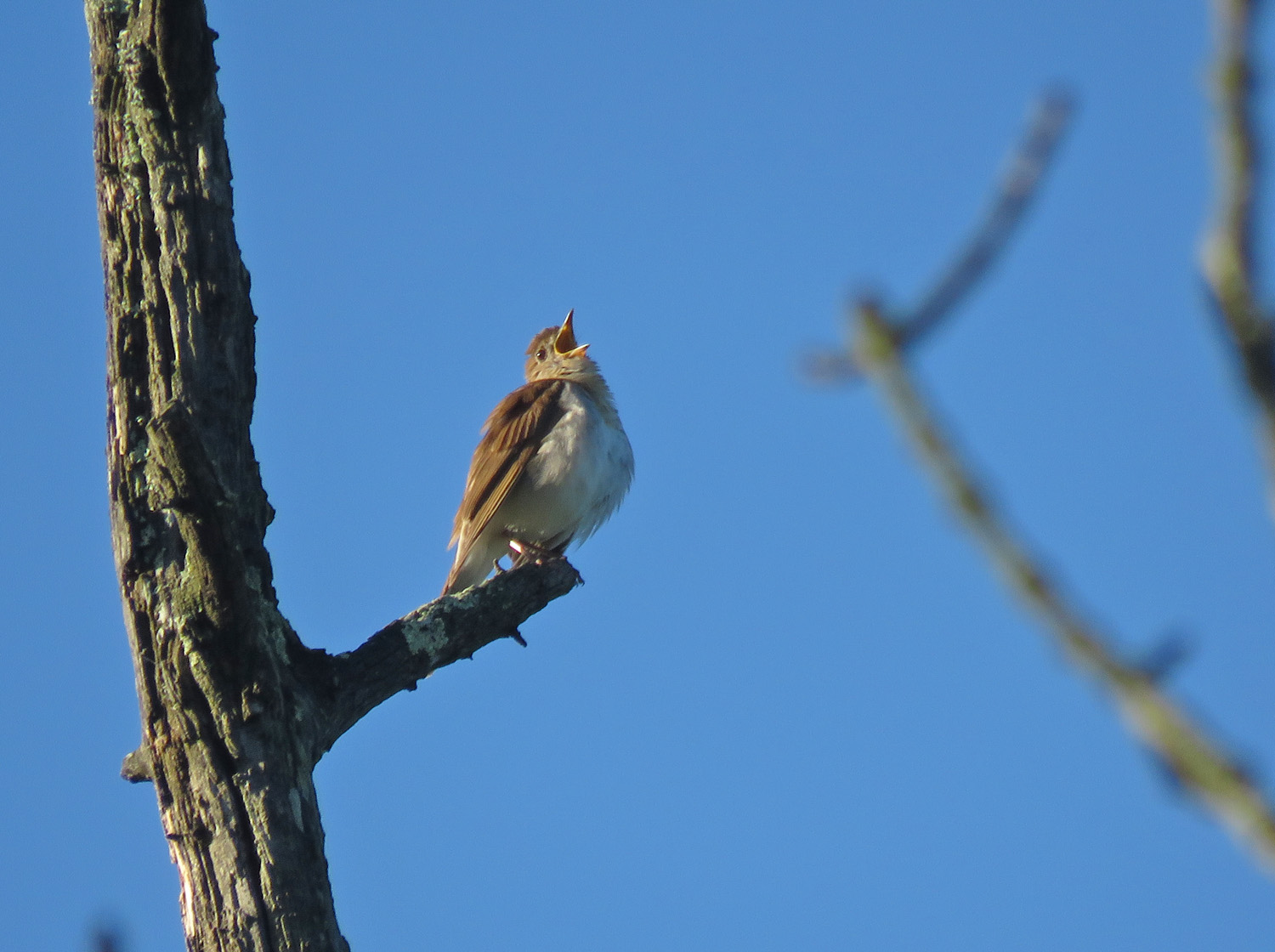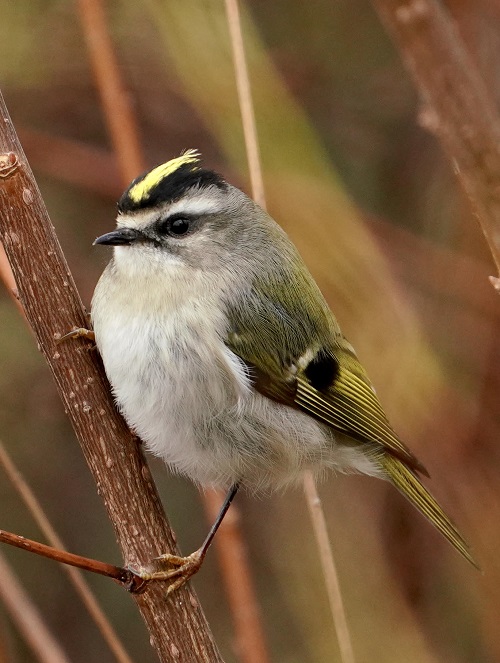The attendees were pleased with great weather conditions this year for the Honey Creek Birdathon. The afternoon and early evening of the prior day had been very rainy, but fortunately the weather cleared overnight. The early morning was chilly, with a low temperature of 45 degrees, but there were calm conditions and clear skies – which are always appreciated. The high temperature by late morning was 62.
An early morning birding hike commenced at 3:45 AM, with several BARRED OWLS calling from various directions, and an AMERICAN WOODCOCK was peenting and doing flight displays along Skyview Road. COMMON YELLOWTHROATS and SONG SPARROWS started singing very early, along with AMERICAN ROBIN, GRAY CATBIRD and MOURNING DOVE – soon followed by BARN SWALLOW, EASTERN KINGBIRD and WILLOW FLYCATCHER.
A NORTHERN CARDINAL was heard at 4:39 AM, followed by a WOOD THRUSH at 4:47, and then at least three BLACK-BILLED CUCKOOS were heard calling from various directions. Other birds included VEERY, BLUE-WINGED and YELLOW WARBLERS, BALTIMORE ORIOLE and ROSE-BREASTED GROSBEAK – as well as many others along Skyview Road. 37 species were counted during this early morning hike.
Around 6:00 AM we began another checklist, with a hike that started at the Cox Nature Center once again – this time hiking north along Alder Drive, west along Skyview Road, and then north along the original Honey Creek trail.
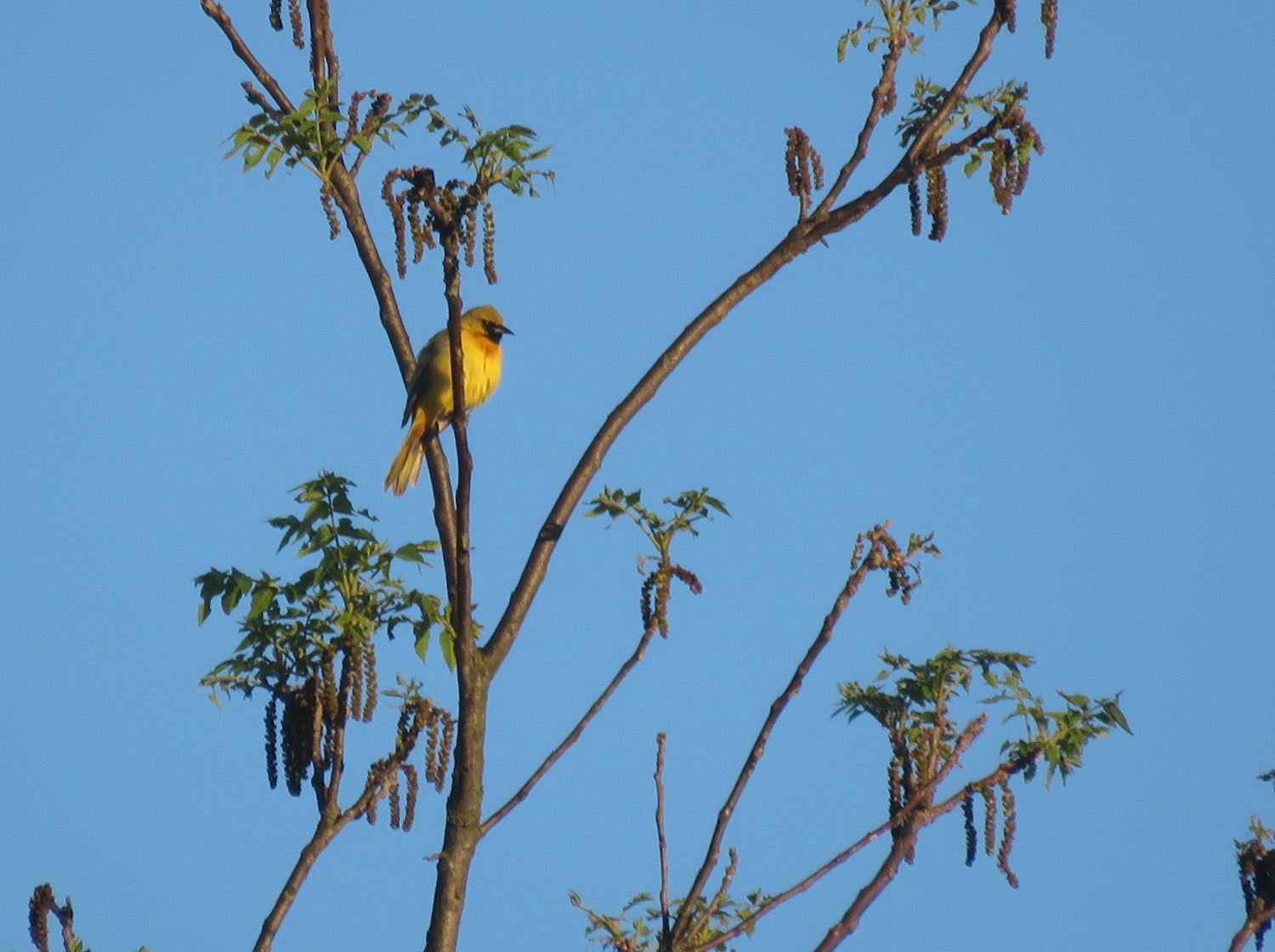
ORCHARD ORIOLE, young male - PHOTO BY TOM SCHULTZ
An ORCHARD ORIOLE (a young male) was singing loudly from the former site of the Cox homestead, and a BALTIMORE ORIOLE and WILLOW FLYCATCHER sang along the gravel entrance road. CEDAR WAXWINGS could be spotted in the dead ash trees, and SONG and SWAMP SPARROWS sang from the shrubby wetlands. Other birds along the way included VEERY, WOOD THRUSH, AMERICAN REDSTART, BLUE-WINGED WARBLER, ROSE-BREASTED GROSBEAK, and INDIGO BUNTING. YELLOW-BILLED CUCKOOS were also heard.
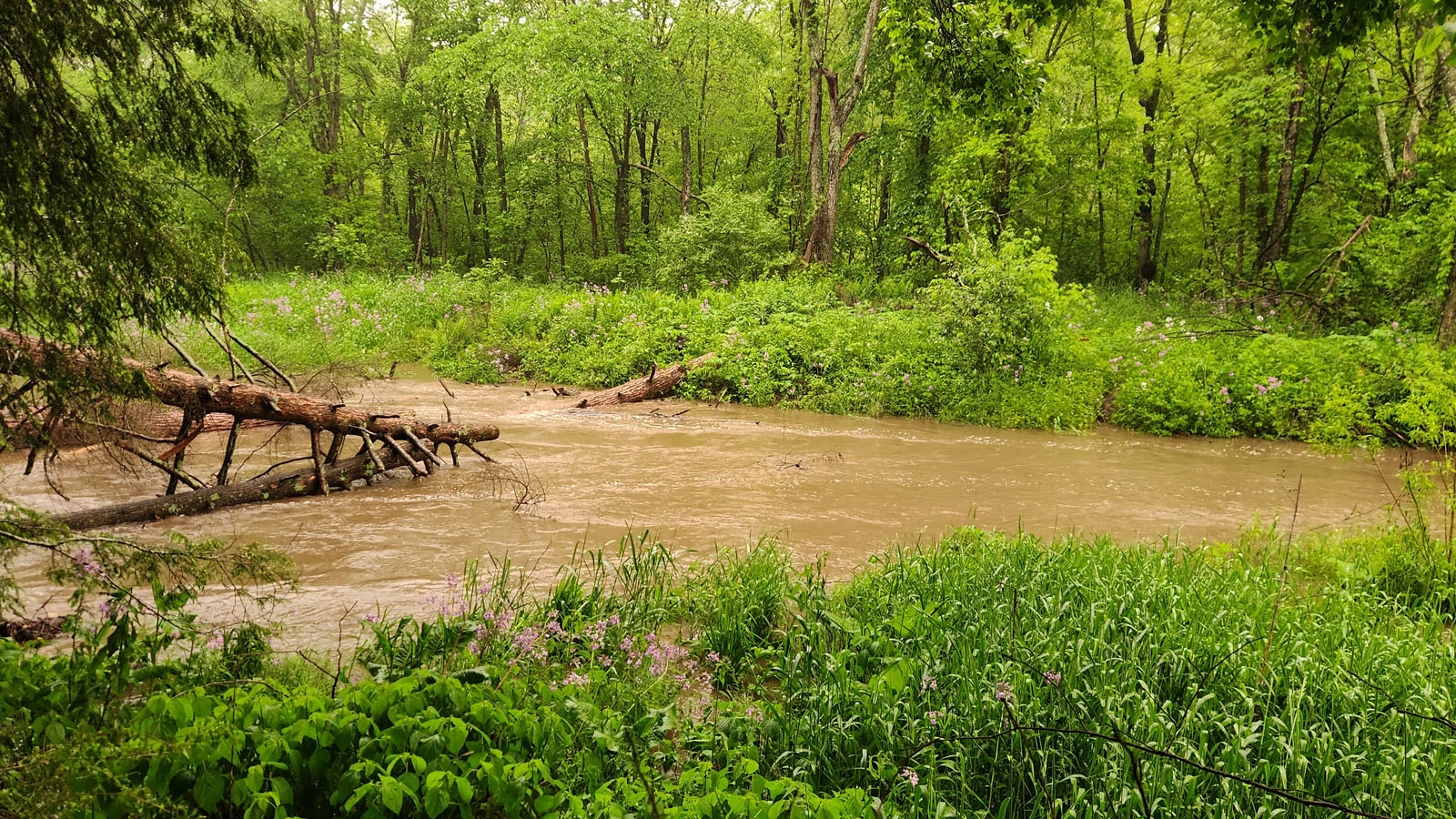
HIGH WATER AT HONEY CREEK - PHOTO BY TOM SCHULTZ
We hiked the trail that leads north to Honey Creek, where we could see that the crossing the creek on the usual stepping stones would be impossible, due to the deep, brown waters that had resulted from the recent rains. The creek level was probably a foot and half lower that it had been the evening before, but still too much deep to enable anyone to cross safely. We were pleased, however, to hear a LOUISIANA WATERTHRUSH singing just upstream – which is a regular location for them every year.
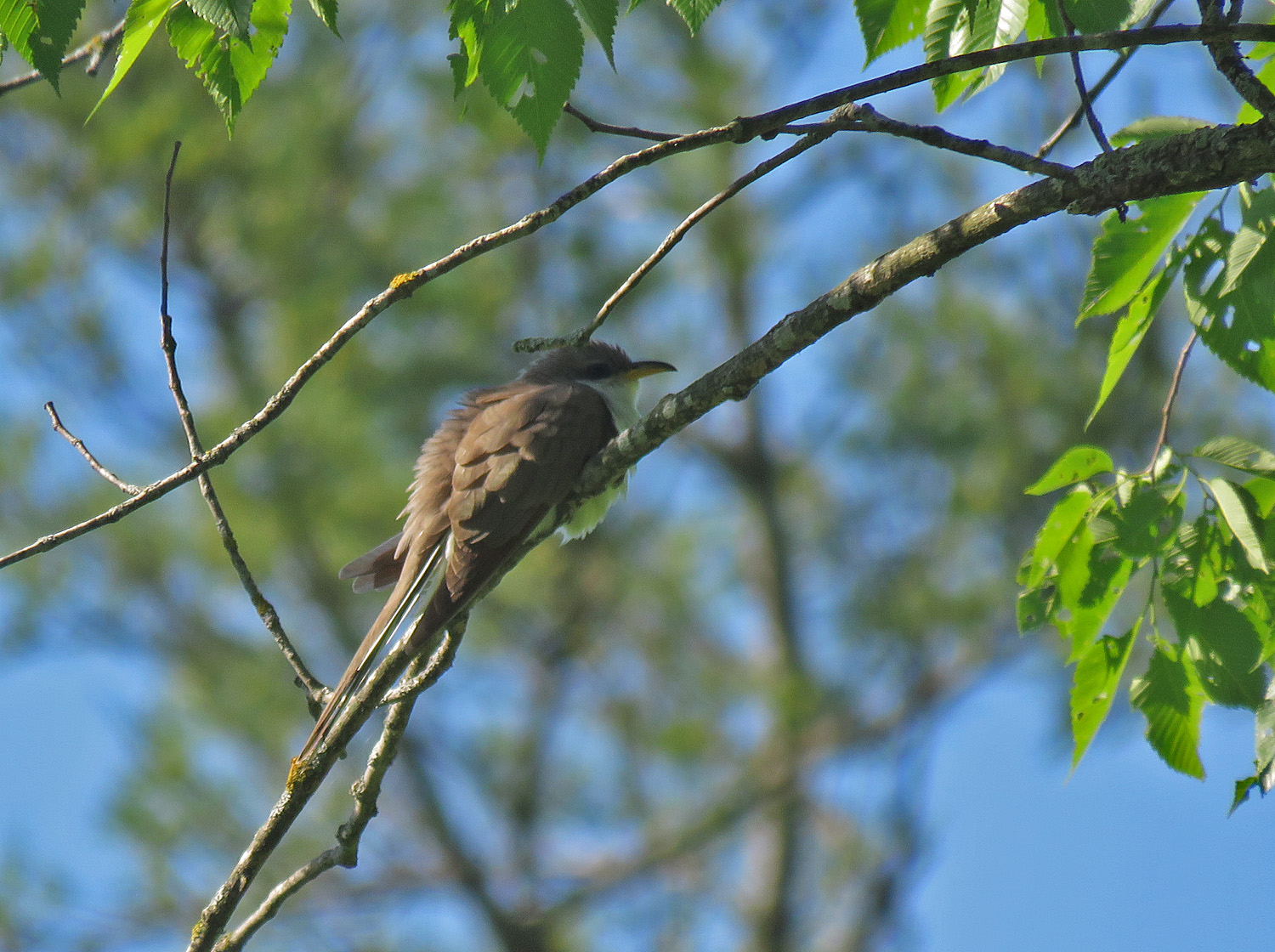
YELLOW-BILLED CUCKOO - PHOTO BY TOM SCHULTZ
The main birding tour started at 8:30 AM at the Cox Nature Center, and we had a group of nine individuals that hiked up into the Dischler Tract portion of the WSO Honey Creek property. Many of the same bird species were encountered along the way, including some nice looks at WILLOW FLYCATCHER and a YELLOW-BILLED CUCKOO along Skyview Road.
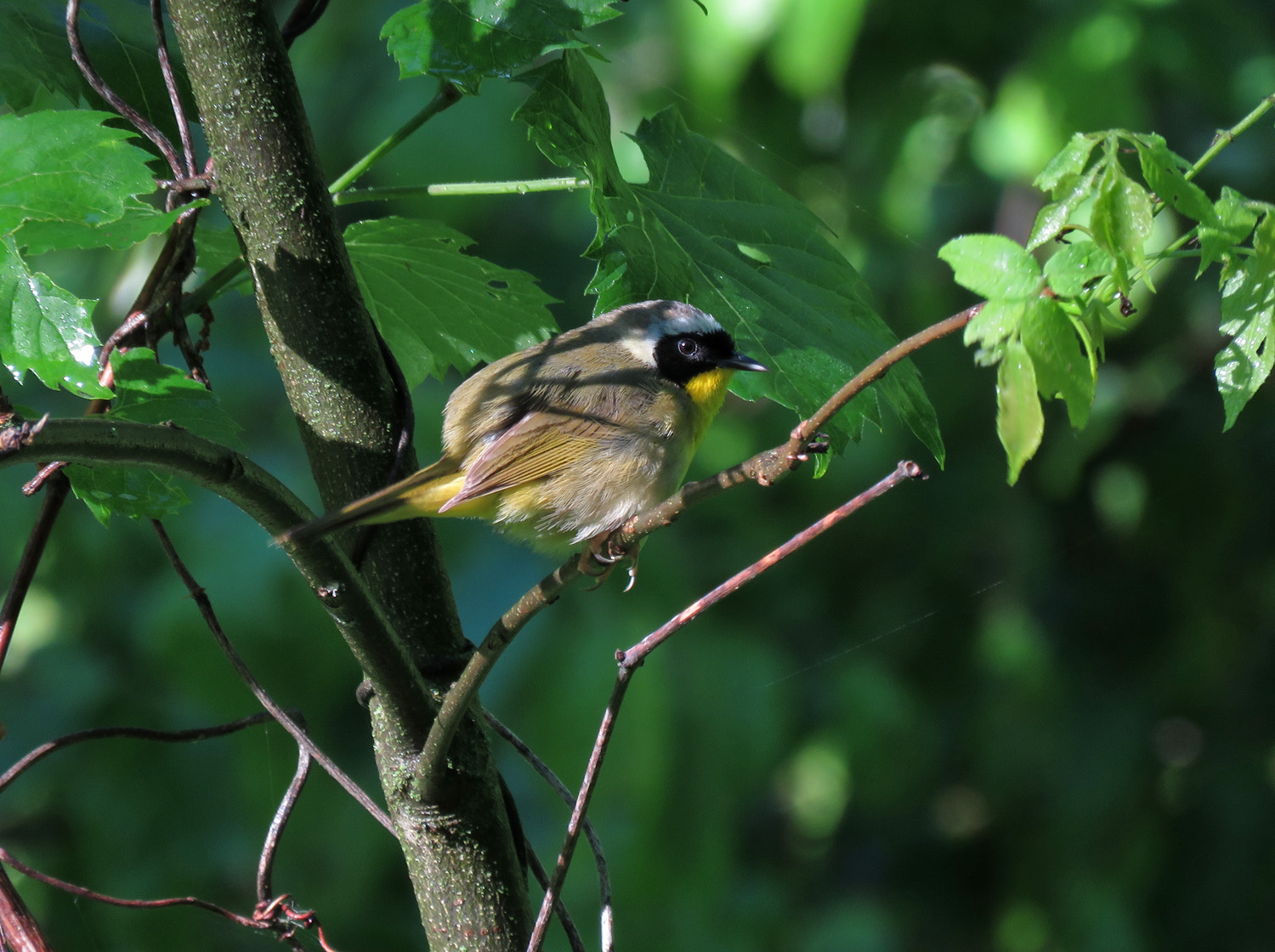
COMMON YELLOWTHROAT - PHOTO BT TOM SCHULTZ
We ascended the trail through a couple of grassy fields and entered the tall oak forest. OVENBIRDS, RED-EYED VIREOS and WOOD THRUSHES were calling, and we encountered both RED-HEADED and RED-BELLIED WOODPECKERS. SCARLET TANAGER, YELLOW-THROATED VIREO and INDIGO BUNTING were also found along the way. The highlight for most was probably seeing and hearing ACADIAN FLYCATCHERS, which breed there annually.
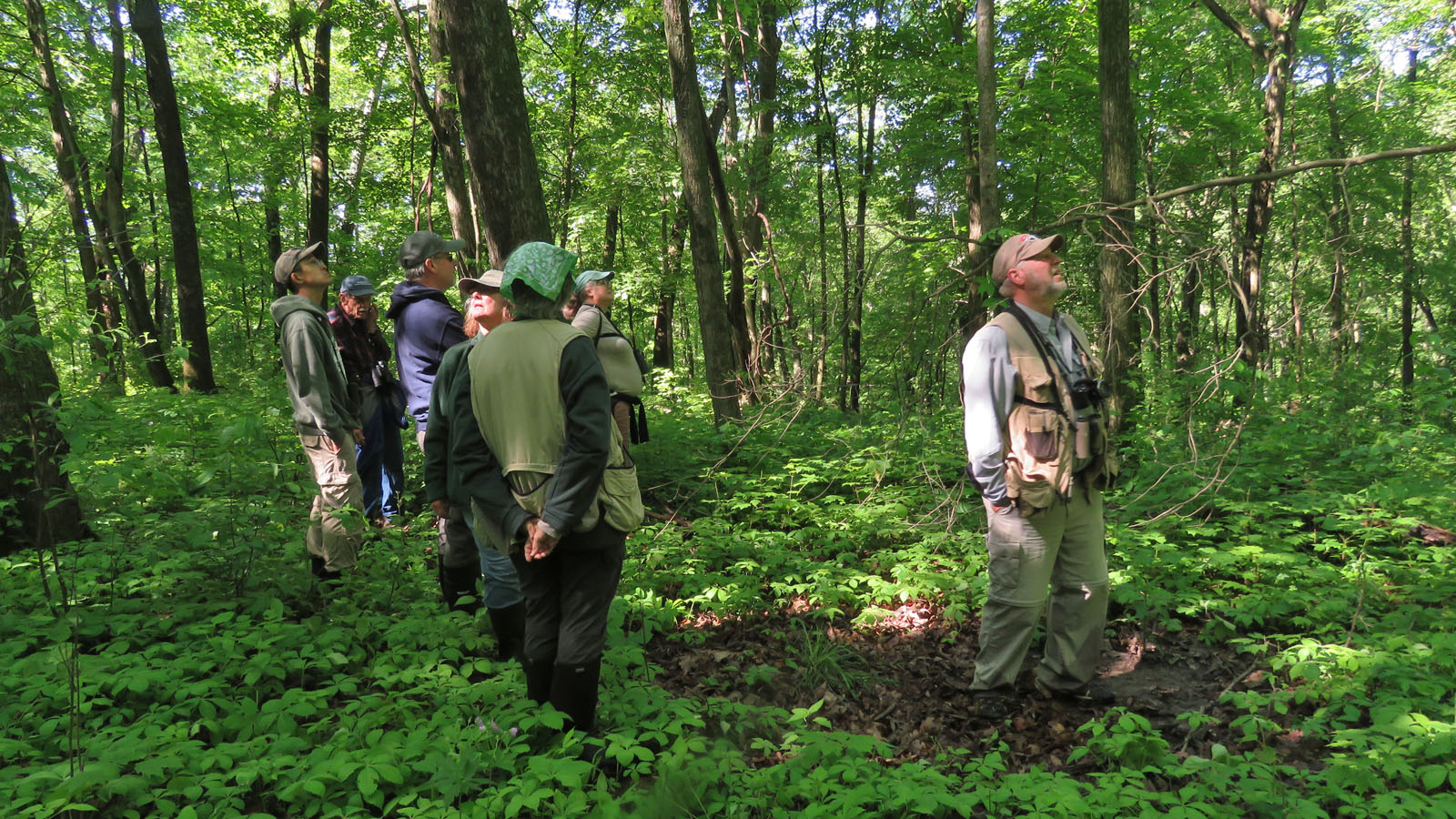
HONEY CREEK, DISCHLER TRACT - PHOTO BY TOM SCHULTZ
Usually during this hike we would be able to complete a loop and return down the old trail, but due to the high waters of Honey Creek, we were unable to cross the creek – but instead had to return back on the path we had come. We returned to the Cox Nature Center and completed our 2.6 mile hike about 11:00 AM, with a checklist of 51 species. For the entire morning, we found a total of 62 bird species.
 https://ebird.org/tripreport/244811
https://ebird.org/tripreport/244811
Tom Schultz, WSO Field Trips
